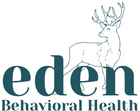Child Behavior Disorder: Issues, Parenting, How To Stop
Child Behavior Disorder: Common Issues, Parenting Tips, and How to Stop Problem Behaviors
What You'll Learn
Understand Behavior, Common Problems and Solutions, When To Worry, Stop Negative Behavior, Strategies, Behavior Checklist
Understanding Behavior Issues In Children
Definition: Behavior issues refer to persistent, disruptive behaviors that impact a child’s well-being, relationships, or ability to function at home or school.
Variety of Behaviors: These can include defiance, aggression, tantrums, or frequent rule-breaking.
Emotional Expression: Children often express feelings through behaviors, particularly if they lack the words or emotional skills to communicate effectively.
Actionable Tip: Observe your child’s triggers—specific events, times of day, or environments that spark problematic behaviors. Identifying triggers is the first step toward effective intervention.
Common Problems and Solutions
Defiance & Oppositional Behavior
Problem: Refusing to follow rules, arguing with adults, or deliberately annoying others.
Solution: Clear, consistent boundaries; positive reinforcement for compliance; and predictable consequences for rule-breaking.
Physical Aggression & Tantrums
Problem: Hitting, kicking, biting, or having meltdowns that involve physical harm or property destruction.
Solution: Use a calm-down area or “time-in” approach, teach alternative ways to express anger (verbalize feelings, punch a pillow), and model calm behavior.
Impulsivity & Hyperactivity
Problem: Acting without thinking, difficulty sitting still, interrupting conversations.
Solution: Provide structured routines, consider activities that channel excess energy (sports, dance), and use visual cues or charts for daily tasks.
Actionable Tip: Address serious issues early. Persistent aggression, ongoing defiance, or self-harm behaviors may require professional assessment by a pediatrician or child therapist.
"Out Of Control" Behaviors
Frequency & Intensity: Behavior that escalates frequently or leads to physical harm may indicate an underlying disorder (e.g., Oppositional Defiant Disorder, Conduct Disorder, ADHD).
School & Social Impact: If teachers note disruptive conduct, or if peers avoid your child due to aggressive behavior, it’s time to seek professional guidance.
Emotional Red Flags: Persistent sadness, anxiety, or extreme irritability can fuel “acting out” behaviors.
Actionable Tip: Keep a behavior log—record what happened before, during, and after an outburst. Share it with a mental health professional to identify patterns and potential solutions.
Parenting Strategies
Empathetic Listening
Validate your child’s feelings: “I see you’re upset. Can you tell me what’s making you feel this way?”
Active listening shows respect for their emotions and can de-escalate tension.
Model Desired Behavior
Children learn from observing adults. Display calm, respectful communication—even when upset.
Offer Choices
If a child resists tasks, provide two acceptable options (“Would you like to clean your room before or after snack?”).
This fosters independence while maintaining boundaries.
Use Visual Aids
Visual schedules, sticker charts, or behavior trackers help children understand expectations and see progress.
Actionable Tip: Avoid labeling your child as “bad” or “naughty.” Focus on the behavior as the problem, not the child’s character.
How To Stop Negative Behaviors
Consistent Routines & Rules
Children thrive on predictability. Establish a daily schedule for meals, homework, and bedtime.
Make rules clear and enforce them consistently across all caregivers.
Positive Reinforcement
Praise or reward good behavior to encourage repetition.
Use specific feedback (“Great job cleaning up your toys right away!”) rather than generic praise.
Logical Consequences
Instead of arbitrary punishments, use consequences that directly relate to the behavior (e.g., if they draw on the walls, they help clean it).
Ensure the consequence is proportionate and immediately follows the behavior to reinforce cause and effect.
Teach Emotional Regulation
Introduce coping strategies: deep breathing, counting to ten, or creating a “calm-down corner.”
Encourage them to express feelings with words or art.
Actionable Tip: Hold short “family meetings” to discuss rules and consequences. Children who feel included in decision-making are more likely to respect guidelines.
Behavior Checklist
Consider seeking professional help if your child frequently:
Defies or Breaks Rules despite consistent guidance and consequences.
Displays Aggressive Behavior (physical or verbal) with intensity or frequency.
Damages Property or engages in theft, lying, or deceit.
Struggles Emotionally (frequent, uncontrollable tantrums, excessive worries, mood swings).
Has Academic or Social Issues due to behavioral challenges (teacher complaints, detentions, or peer conflicts).
Actionable Tip: Request an evaluation from a pediatrician, school counselor, or child therapist if you check off multiple items. Early diagnosis can prevent more severe issues later.
